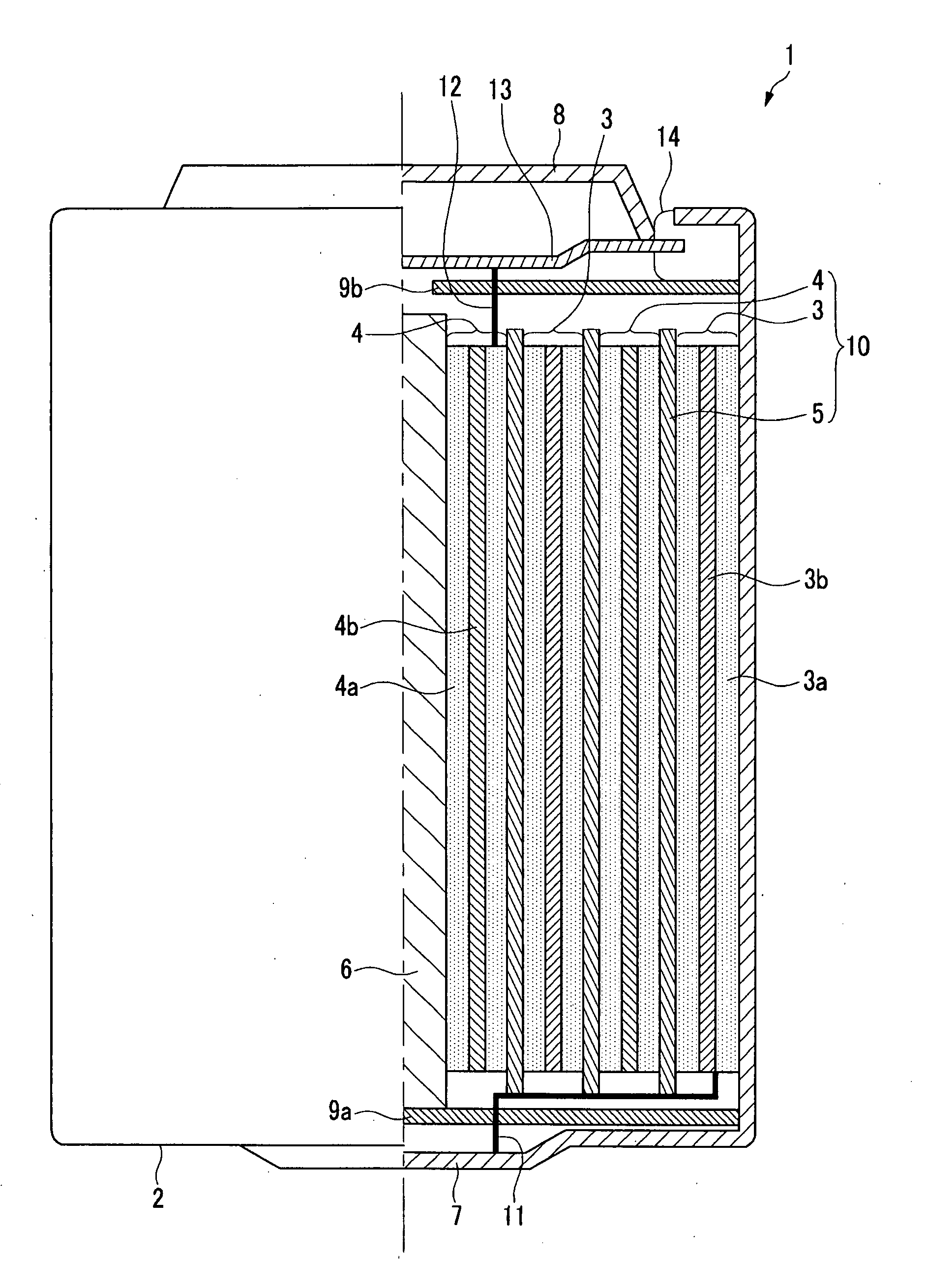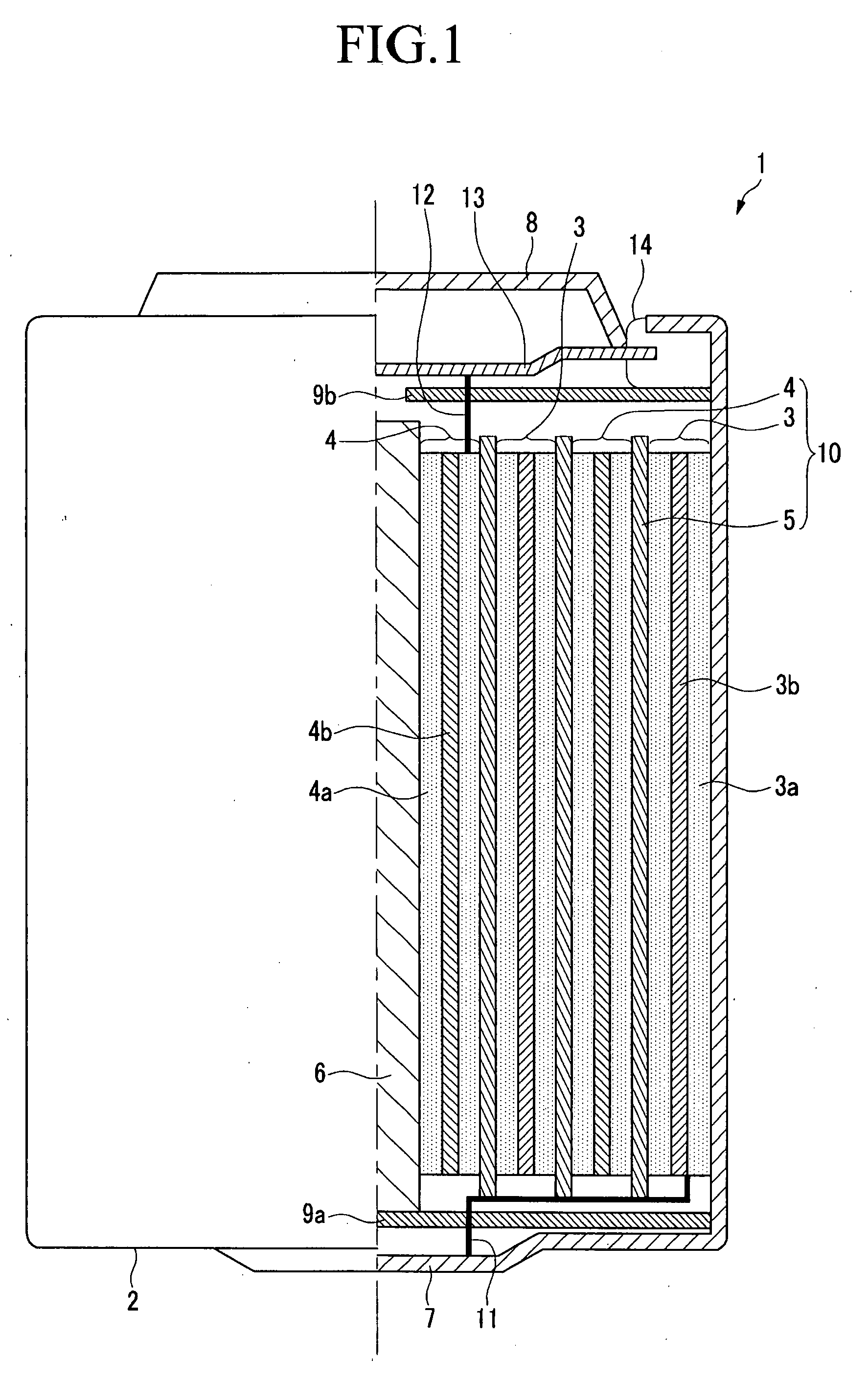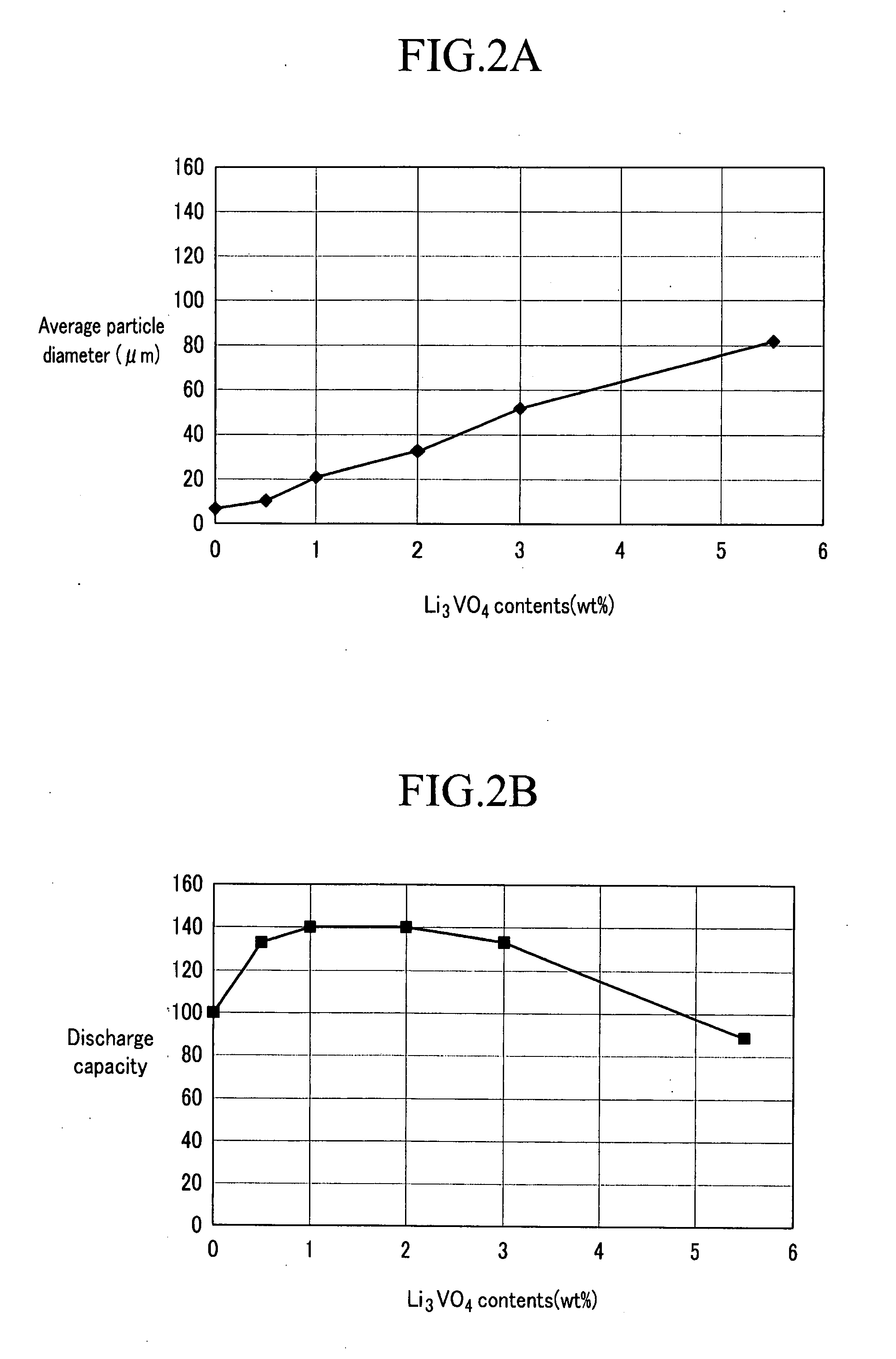Negative active material for non-aqueous rechargeable battery, and non-aqueous rechargeable battery including same
a non-aqueous rechargeable battery and active material technology, applied in the direction of active material electrodes, non-aqueous electrolyte accumulators, non-aqueous electrolyte cells, etc., can solve the problem that the electronic device needs a long operation time from full-charge, and achieve the effect of improving the discharge capacity of the battery
- Summary
- Abstract
- Description
- Claims
- Application Information
AI Technical Summary
Benefits of technology
Problems solved by technology
Method used
Image
Examples
example 1
[0044]A negative active material was prepared in the following method, and then measured regarding discharge capacity and average particle diameter depending on the content of Li3VO4 therein to evaluate the relationship of the content of Li3VO4 to discharge capacity and average particle diameter thereof. The results are shown in FIGS. 2A and 2B.
[0045]Preparation of a Negative Active Material
[0046]LiOH (lithium hydroxide) and V2O3 (vanadium trioxide) were mixed in a mole ratio of 1.22:1 between lithium and vanadium, and Li3VO4 was respectively added thereto in an amount of 0 wt %, 1 wt %, 2 wt %, 3 wt %, and 5.5 wt %. The resulting product was fired at 1100° C. under a nitrogen atmosphere to prepare a negative active material including LiVO2 as a main component and Li3VO4.
[0047]1-2) Evaluation
[0048]The negative active material according to Example 1 was measured regarding average particle diameter. Then, an X-ray diffraction method was employed to measure the content of Li3VO4 in the...
example 2
[0059]A negative active material including lithium vanadium oxide as a main component was prepared to include Li3VO4 in an amount of 0.5 to 3.0 wt %, and thereby to have an appropriate average particle diameter. When the negative active material was used for the negative electrode, it can improve discharge capacity by 30 to 40% compared with a non-aqueous rechargeable battery not including Li3VO4 in the negative active material. Herein, the negative active material had an average particle diameter ranging from 10 to 50 μm.
example 3
[0060]The negative active material including lithium vanadium oxide as a main component was prepared to include Li3VO4 in an amount of 1 to 2 wt %, and thereby to have an appropriate average particle diameter. When the negative active material was used for the negative electrode, it can improve discharge capacity by 40% compared with a non-aqueous rechargeable battery not including Li3VO4 in the negative active material.
PUM
 Login to View More
Login to View More Abstract
Description
Claims
Application Information
 Login to View More
Login to View More - R&D Engineer
- R&D Manager
- IP Professional
- Industry Leading Data Capabilities
- Powerful AI technology
- Patent DNA Extraction
Browse by: Latest US Patents, China's latest patents, Technical Efficacy Thesaurus, Application Domain, Technology Topic, Popular Technical Reports.
© 2024 PatSnap. All rights reserved.Legal|Privacy policy|Modern Slavery Act Transparency Statement|Sitemap|About US| Contact US: help@patsnap.com










